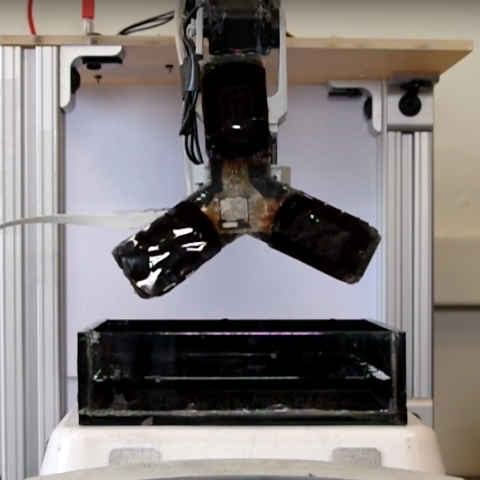Engineers develop new biosensing robotic arm that uses engineered bacteria to perform ‘taste’ test

A robotic arm can now perform ‘taste’ test for the chemical IPTG.
This is possible with the help of engineered E. coli bacteria.
The robot is a proof of concept for biology-based soft robotics.
With advancement in science and technology, we’ve seen robots that can perform simple tasks like picking up objects, to ones that can do parkour. By integrating different types of sensors, these robots are also being used to see, feel and recognise objects. However, engineers at the University of California, Davis, and Carnegie Mellon University (CMU) have created a new robotic arm that can perform a ‘taste’ test for a specific chemical. Using engineered E. coli bacteria, the gripper soft robot can biosense for the chemical IPTG. While the process, which, as you can see in the video embedded below, is quite slow and basic. It serves as a proof of concept for future biology-based soft robotics.
The engineered bacteria resides within a porous membrane that enables chemicals to enter, but keeps the cells intact inside. When the chemical IPTG permeates the membrane, the bacteria cells produce a fluorescence protein and electronic circuits inside the module that houses the entire setup detects the light. The robot then interprets the electric signals that are sent to its control unit to decide whether to pick something up or to release it. As seen in the video below, the gripper robot spends hours submerged in the water bath to figure out whether the water contains the chemical or not before placing the ball in it.
“By combining our work in flexible electronics and robotic skin with synthetic biology, we are closer to future breakthroughs like soft biohybrid robots that can adapt their abilities to sense, feel and move in response to changes in their environmental conditions,” says Carmel Majidi, a co-author and Associate Professor of Mechanical Engineering at CMU. The research paper describing the new development was published in the Science Robotics Journal. Currently, the robot is capable of ‘tasting’ only one chemical and it is said to be difficult to come up with systems that can detect varying concentrations.
Digit NewsDesk
Digit News Desk writes news stories across a range of topics. Getting you news updates on the latest in the world of tech. View Full Profile





